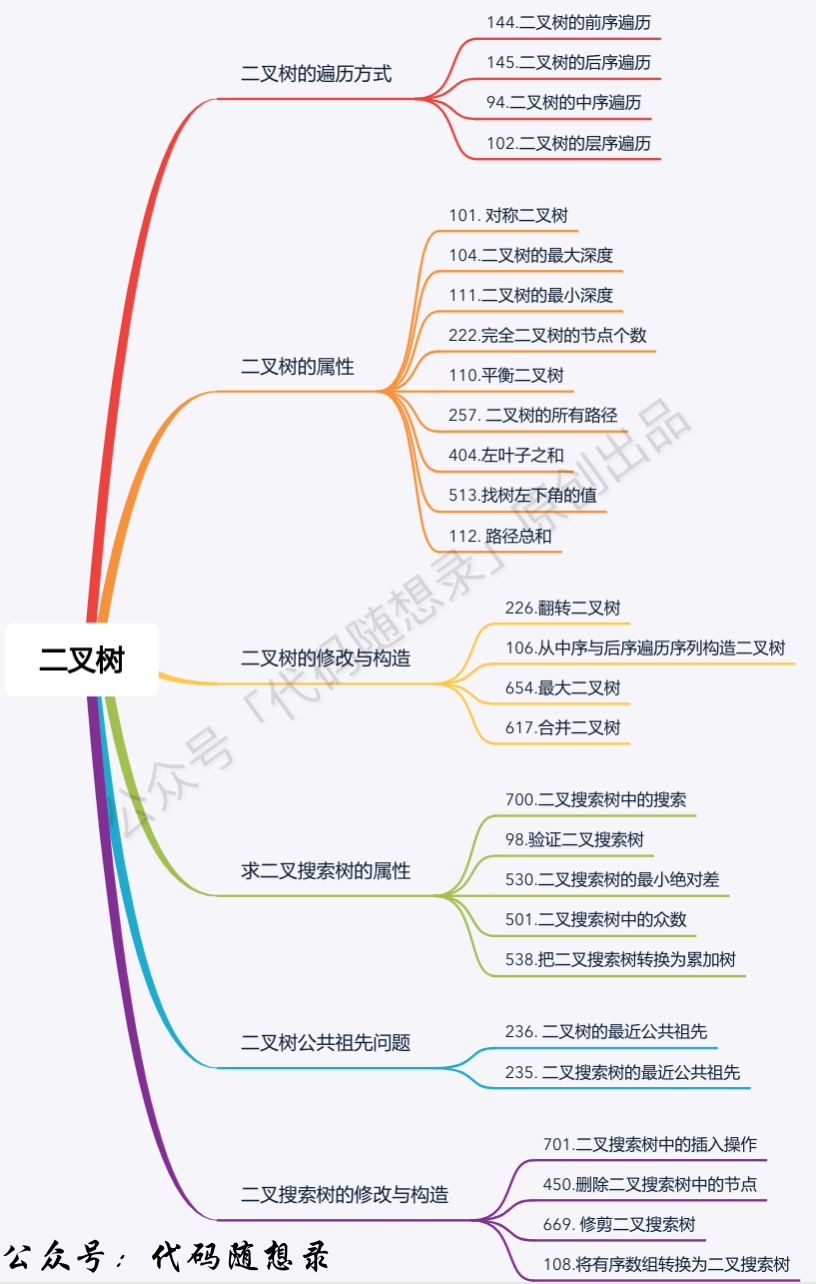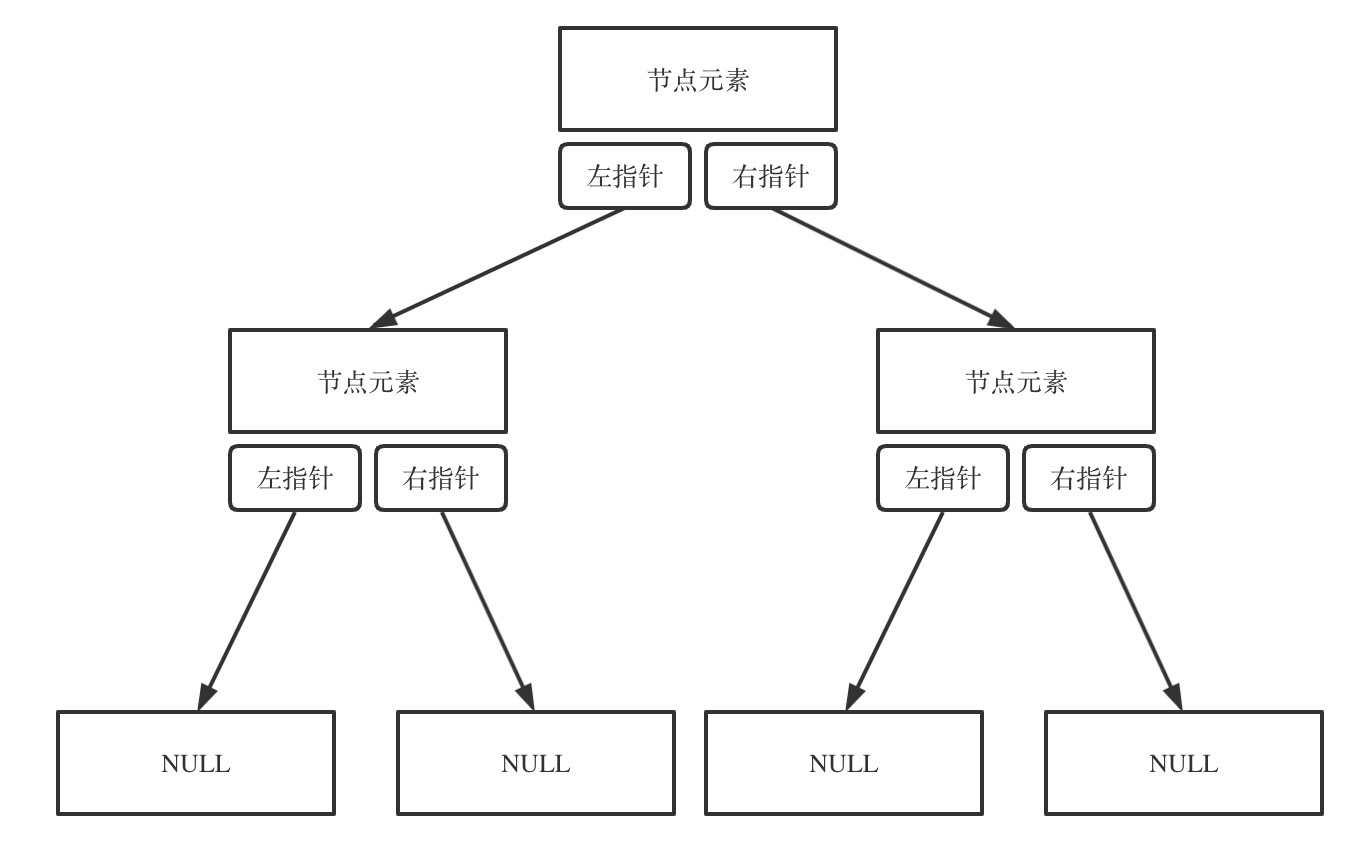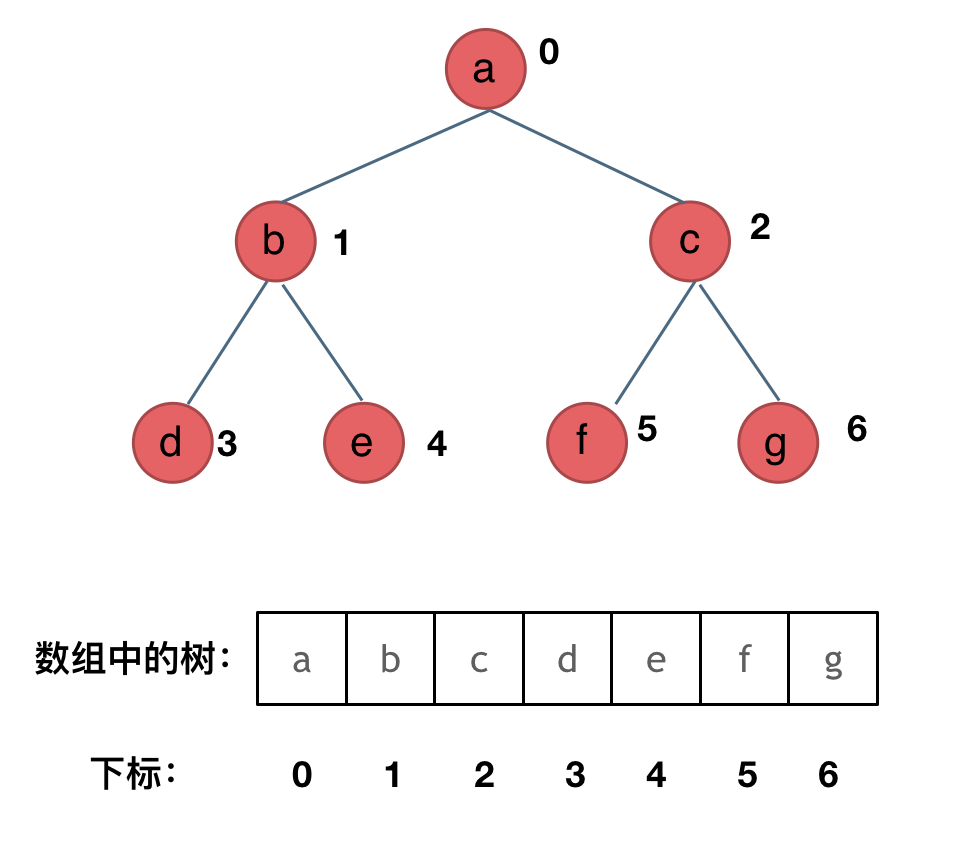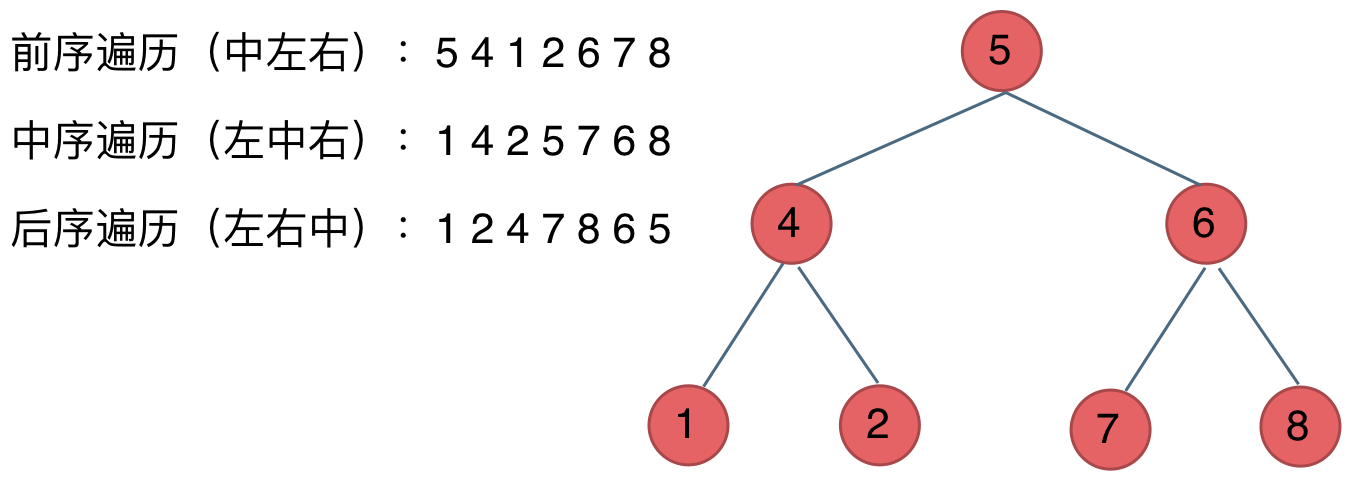栈与队列
栈与队列,队列是先进先出,栈是先进后出。
push(x) -- 将一个元素放入队列的尾部。
pop() -- 从队列首部移除元素。
peek() -- 返回队列首部的元素。
empty() -- 返回队列是否为空。

括号匹配问题:用栈进行匹配,先入后出
字符串去重问题:跟括号匹配同理
逆波兰表达式问题:栈匹配
滑动窗口最大值问题:队列,后面元素进行比较,前面可以移除不符合的元素
求前K个高频元素:Map键值对,优先级队列做匹配,用堆去维护
二叉树

二叉树链式存储

二叉树顺序存储

如果父节点数组的下标是i,那么它的左孩子就是i*2+1,右孩子就是i*2+2
深度优先遍历:先往深走,遇到叶子节点再往回走;有三个顺序:前序遍历,中序遍历,后序遍历

广度优先遍历:一层一层的遍历
二叉树节点书写规范(可能会有面试官要求手撕出来)
public class TreeNode {
int val;
TreeNode left;
TreeNode right;
TreeNode() {}
TreeNode(int val) { this.val = val; }
TreeNode(int val, TreeNode left, TreeNode right) {
this.val = val;
this.left = left;
this.right = right;
}
}递归三要素:1.确定递归函数的参数和返回值;2.确定终止条件;3.确定单层递归逻辑
时间复杂度上递归和迭代差不多,但在空间复杂度上递归的开销会大一些,在实际项目开发过程中要避免递归,项目代码参数调用关系都比较复杂,不容易控制递归深度,甚至会栈溢出。
层序遍历(广度优先遍历)相对容易
class Solution {
public List<List<Integer>> levelOrder(TreeNode root) {
if (root == null) {
return new ArrayList<>();
}
List<List<Integer>> res = new ArrayList<>();
Queue<TreeNode> queue = new LinkedList<TreeNode>();
queue.add(root);
while (!queue.isEmpty()) {
int count = queue.size();
List<Integer> list = new ArrayList<>();
while (count > 0) {
TreeNode node = queue.poll();
list.add(node.val);
if (node.left != null) {
queue.add(node.left);
}
if (node.right != null) {
queue.add(node.right);
}
count--;
}
res.add(list);
}
return res;
}
}二叉树前序遍历(深度优先遍历)迭代法
class Solution {
public List<Integer> preorderTraversal(TreeNode root) {
List<Integer> result = new LinkedList<>();
Stack<TreeNode> stack = new Stack<>();
if(root!=null){
stack.push(root);
}
while (!stack.isEmpty()){
TreeNode node = stack.peek();
if(node!=null){
stack.pop();
if (node.right!=null) stack.push(node.right);
if (node.left!=null) stack.push(node.left);
stack.push(node);
stack.push(null);
}else {
stack.pop();
node = stack.peek();
stack.pop();
result.add(node.val);
}
}
return result;
}
}递归法
// 前序遍历·递归·LC144_二叉树的前序遍历
class Solution {
public List<Integer> preorderTraversal(TreeNode root) {
List<Integer> result = new ArrayList<Integer>();
preorder(root, result);
return result;
}
public void preorder(TreeNode root, List<Integer> result) {
if (root == null) {
return;
}
result.add(root.val);
preorder(root.left, result);
preorder(root.right, result);
}
}
// 中序遍历·递归·LC94_二叉树的中序遍历
class Solution {
public List<Integer> inorderTraversal(TreeNode root) {
List<Integer> res = new ArrayList<>();
inorder(root, res);
return res;
}
void inorder(TreeNode root, List<Integer> list) {
if (root == null) {
return;
}
inorder(root.left, list);
list.add(root.val); // 注意这一句
inorder(root.right, list);
}
}
// 后序遍历·递归·LC145_二叉树的后序遍历
class Solution {
public List<Integer> postorderTraversal(TreeNode root) {
List<Integer> res = new ArrayList<>();
postorder(root, res);
return res;
}
void postorder(TreeNode root, List<Integer> list) {
if (root == null) {
return;
}
postorder(root.left, list);
postorder(root.right, list);
list.add(root.val); // 注意这一句
}
}高度用后序遍历,深度用前序遍历
对称二叉树,判断每个叶子节点跟根节点之间的路径
//方式一
class Solution {
/**
* 递归法
*/
public List<String> binaryTreePaths(TreeNode root) {
List<String> res = new ArrayList<>();// 存最终的结果
if (root == null) {
return res;
}
List<Integer> paths = new ArrayList<>();// 作为结果中的路径
traversal(root, paths, res);
return res;
}
private void traversal(TreeNode root, List<Integer> paths, List<String> res) {
paths.add(root.val);// 前序遍历,中
// 遇到叶子结点
if (root.left == null && root.right == null) {
// 输出
StringBuilder sb = new StringBuilder();// StringBuilder用来拼接字符串,速度更快
for (int i = 0; i < paths.size() - 1; i++) {
sb.append(paths.get(i)).append("->");
}
sb.append(paths.get(paths.size() - 1));// 记录最后一个节点
res.add(sb.toString());// 收集一个路径
return;
}
// 递归和回溯是同时进行,所以要放在同一个花括号里
if (root.left != null) { // 左
traversal(root.left, paths, res);
paths.remove(paths.size() - 1);// 回溯
}
if (root.right != null) { // 右
traversal(root.right, paths, res);
paths.remove(paths.size() - 1);// 回溯
}
}
}
//方式二
class Solution {
List<String> result = new ArrayList<>();
public List<String> binaryTreePaths(TreeNode root) {
deal(root, "");
return result;
}
public void deal(TreeNode node, String s) {
if (node == null)
return;
if (node.left == null && node.right == null) {
result.add(new StringBuilder(s).append(node.val).toString());
return;
}
String tmp = new StringBuilder(s).append(node.val).append("->").toString();
deal(node.left, tmp);
deal(node.right, tmp);
}
}
// 解法二
class Solution {
/**
* 迭代法
*/
public List<String> binaryTreePaths(TreeNode root) {
List<String> result = new ArrayList<>();
if (root == null)
return result;
Stack<Object> stack = new Stack<>();
// 节点和路径同时入栈
stack.push(root);
stack.push(root.val + "");
while (!stack.isEmpty()) {
// 节点和路径同时出栈
String path = (String) stack.pop();
TreeNode node = (TreeNode) stack.pop();
// 若找到叶子节点
if (node.left == null && node.right == null) {
result.add(path);
}
//右子节点不为空
if (node.right != null) {
stack.push(node.right);
stack.push(path + "->" + node.right.val);
}
//左子节点不为空
if (node.left != null) {
stack.push(node.left);
stack.push(path + "->" + node.left.val);
}
}
return result;
}
}